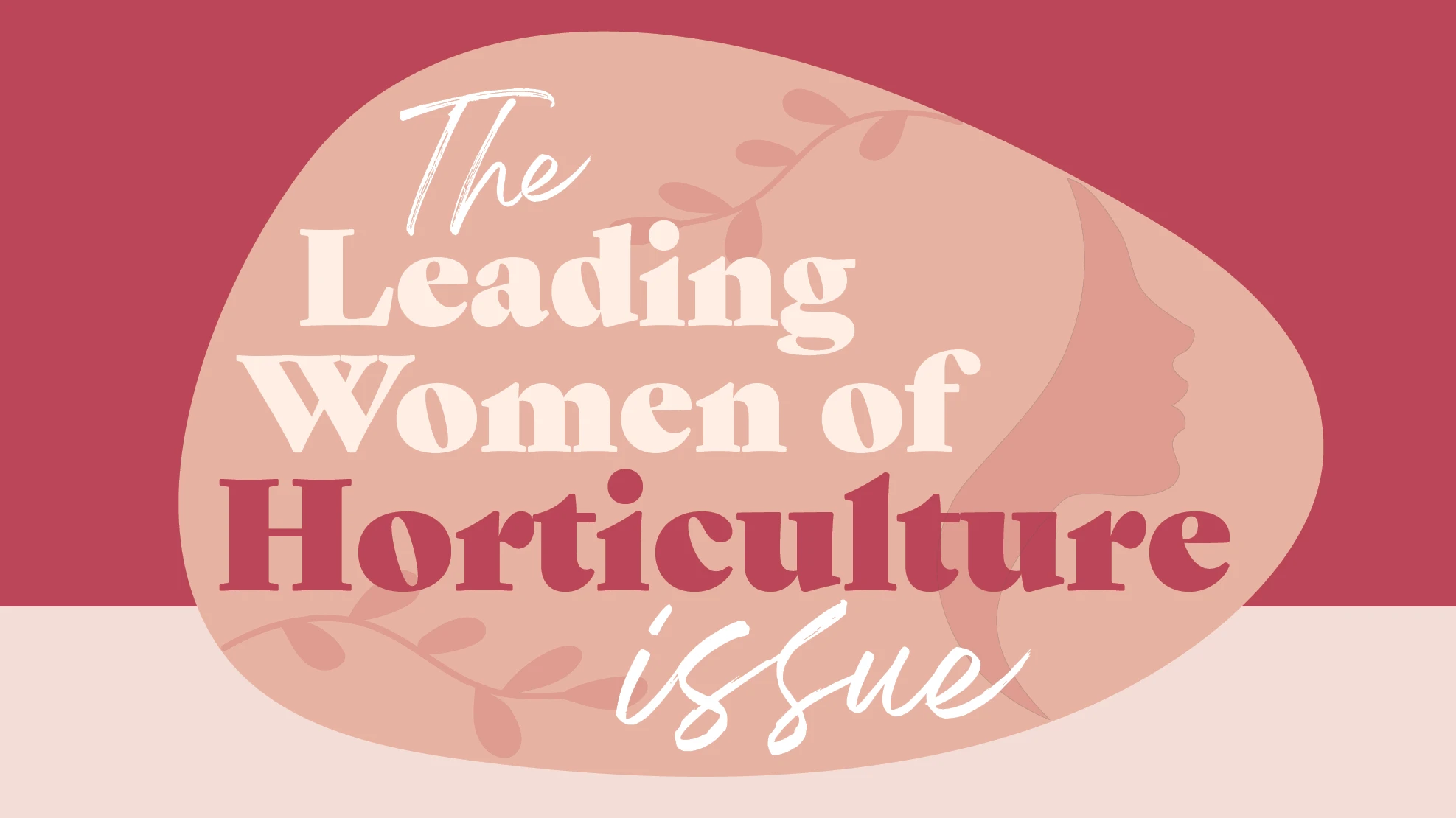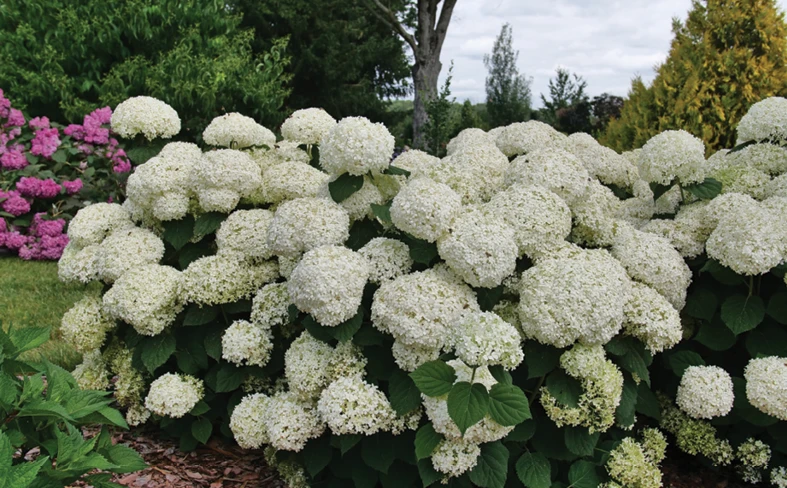 Just like many teenagers who grew up in a family nursery, John Lewis worked 8 hours a day each summer pulling weeds.
Just like many teenagers who grew up in a family nursery, John Lewis worked 8 hours a day each summer pulling weeds.
His dad Bill Lewis always told him, “This way you’ll know what you don’t want to do for the rest of your life.” While in college, John’s uncle asked if he was going into the nursery business, and he resoundingly replied, “That’s the last thing I’ll ever do.”
Ironically, it’s 15 years later, and John is the president of his own nursery, JLPN Inc. He has no plans of going anywhere or doing anything else but working in “the greatest industry.”
Cover-crop evolution
Since its beginning more than a decade ago, JLPN has refined its seedling business and continues to do so daily. The bareroot seedlings that are produced today are far superior to product from just 10 years ago due to soil-management practices.
Cover crops are grown for a minimum of three years. This is followed by fumigation for pest and disease prevention. Seedlings are grown for a maximum of three years before the cycle is repeated.
Before this rotation process was instituted, the soil had an organic matter level of approximately 1-2 percent. Now, by using cover crops such as Sudan grass, perennial rye grass, wheat and/or silage corn, the organic matter level is up to 15 percent. This change has effectively improved the root fiber achieved on each seedling.
Righteous roots
JLPN roots all of its direct-stick rooted cuttings in volcanic pumice, which Lewis said produces the most fibrous root system possible. It also allows for a higher success with varieties that are typically difficult to propagate, such as elms, birch, Cotinus and contorted filbert.
After the cuttings are harvested, the pumice is incorporated into JLPN’s potting soil mix. Once potted liners are removed from their pots, the pumice (now a part of the potting soil) meets its last and final destination as it is spread and incorporated into the fields.
John is quick to point out the advantages rooted cuttings have over plants from tissue culture.
He said another benefit is most rooted cuttings are between 15-30 percent less expensive than tissue-culture plantlets.
The benefits of container-grown seedlings has meant an increased demand for this particular product line and created a major shift in JLPN’s growing program. Container production means the grower is able to deliver a larger, higher-value product versus the same field-grown product.
JLPN grows nearly all of its container seedlings in Anderson Band Pots. The grower started using the Anderson pot by chance, but continued because of the soil volume of the container, John said.
“It gives more room for the root system to develop,” he said.
 (L-R) Jeremy Powell, Ken Free, John Lewis, Moose and Amy Wagner.Value-added products
(L-R) Jeremy Powell, Ken Free, John Lewis, Moose and Amy Wagner.Value-added products
JLPN compared many growing containers, but found the Anderson pot helped achieve the biggest plants in height, caliper and root mass most efficiently. For instance, oak sales increased because of the optimum root fiber and branching. Beech are taller and have 2 inches between nodes for ease of grafting. Hamamelis virginiana are 3-4 feet tall when grown in a container instead of 8 inches tall when grown in the field.
John admits some customers are skeptical, and at first glance balk at the container price. But, he strongly believes purchasing liners solely based on a cheap up-front cost can actually cost the customer money in the long run. He feels the name of the game in the tree industry these days is more sellable/profitable product, in less time, with less effort and total cost. “Customers need to be able to plant 1,000 trees and dig 950-1,000, not 650,” John said. “Growers need to get more bang for their buck and container-grown seedlings deliver on that goal.”
John doesn’t like to say JLPN’s plants are quality, as he feels “quality” has become a loosely used term that many growers don’t deliver on. He’s more comfortable saying JLPN’s plants are a “value-added product” that help customers make more money. In these difficult economic times, JLPN’s “value-added product” is being recognized by its neighbors.
“In an effort to streamline our operations and reduce costs, we have turned the majority of our plant propagation over to JLPN,” said Mike Reihs, production manager at John Holmlund Nursery in Boring, Ore. “We know that one of the important factors in growing a good quality tree is the root system that we start with, and JLPN has consistently provided us with excellent quality plants.”
Container versus field
How does JLPN decide what to plant in containers? They use a few basic principles:
- Items that normally transplant poorly such as Nyssa, Liquidambar and Stewartia, that don’t like to be bareroot or suffer from dehydration.
- Trees sensitive to cold hardiness like Palmatum, dogwoods, Cercidiphylum and Styrax that typically suffer from freeze damage.
- Plants are ready 12 months out of the year to graft and, because of the container’s soil volume, don’t have to be transplanted immediately such as beech, hornbeam and ginkgos.
- Plants that are easily transplanted in the fall so customers can take advantage of planting during the slow time instead of the soggy spring rains
JLPN has established strict grading standards. John’s dad jokes that people could get rich off of JLPN’s burn pile, because the grower throws away so many seedlings that others see as acceptable.
“Growers can’t afford to receive plant stock with a mixed grade on caliper or height,” John said.
“There are no surprises. Except that when the plants arrive they are nicer than I thought they would be,” said Helen Kunkel, seedling division manager at J. Frank Schmidt & Son Co.’s High Forest Farm of her yearly orders. “The selection is huge. I know exactly what I am going to be getting and exactly when it will arrive. The plants are healthy and perform excellent after transplanting.”
Rooted cuttings must have a minimum of 80 percent rooting around the cutting stick to meet the grade.
“Cuttings or micro-propagation plants that arrive in plug form don’t have this extra root-grading filter,” Lewis said.
From the start, Lewis realized most nurseries are grown and created by families and always relished that dynamic. He doesn’t believe in the “it’s not personal, it’s business” concept. He feels “personal” is what customers ultimately gravitate toward. John feels one of the keys to why JLPN is not only surviving but thriving during this economic crunch is the bond he and his staff share as a family team.
Staff Loyalty
The hardest day he ever had at work was during the winter of 2008 after 35 percent of his tree orders were cancelled. He told his crew there were two choices — cut everyone’s salaries for an unknown amount of time or let two people go and cut all benefits. The staff chose for everyone to keep their job at a lesser pay rate. Not only did JLPN make it through that year, but to Lewis’ satisfaction, he was eventually able to pay employees all the back wages. John said, more than anything, the level of team unity is what makes his company truly distinctive for him and his customers.
For more: JLPN Inc., www.jlpnliners.com.
Maria Zampini is president of Lake County New Plants LLC; (440) 259-4059; maria.zampini@yahoo.com.
Get curated news on YOUR industry.
Enter your email to receive our newsletters.
Explore the December 2010 Issue
Check out more from this issue and find your next story to read.





